Potatoes are a versatile and easy-to-grow vegetable that can be planted in gardens or containers. With some planning and care, you can grow a bountiful potato harvest. In this beginner’s guide, we’ll walk through the entire process of how to plant potatoes, from choosing seed potatoes to harvesting your crop.
Choosing Seed Potatoes
The first step in planting potatoes is selecting the right seed potatoes. Look for certified disease-free seed potatoes from a garden center or seed catalog. Avoid using potatoes from the grocery store, as these may be treated with anti-sprouting chemicals.
When selecting seed potatoes, choose varieties suited to your climate. Early season, midseason, and late-season varieties are available. Early varieties mature faster for an earlier harvest, while late varieties store better through winter. Some popular varieties include:
- Russet – Fluffy, excellent for baking
- Yukon Gold – Waxy, rich flavor
- Red – Moist, firm flesh
- Fingerling – Small, tender finger-shaped potatoes
Purchase seed potatoes a few weeks before your last expected spring frost date. Choose tubers that are firm and free of cuts, sprouts, or blemishes. Larger tubers can be cut into smaller pieces, as long as each piece has 1-2 eyes.
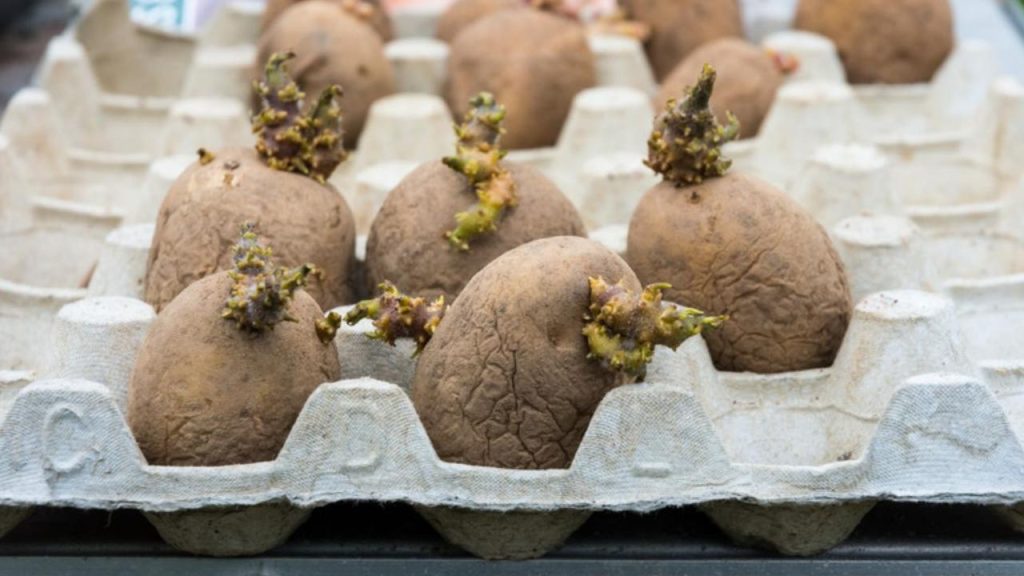
Pre-Sprouting Potatoes
About 2-3 weeks before planting, you’ll want to pre-sprout your seed potatoes. This helps them develop a head start on growth.
To pre-sprout:
- Choose a warm, bright location away from direct sunlight.
- Arrange seed potatoes in a single layer in trays or cardboard boxes.
- Keep potatoes at 60-70°F. Mist occasionally to keep moist but not soaked.
- Once sprouts are 1/4 to 1/2 inch long, they’re ready for planting.
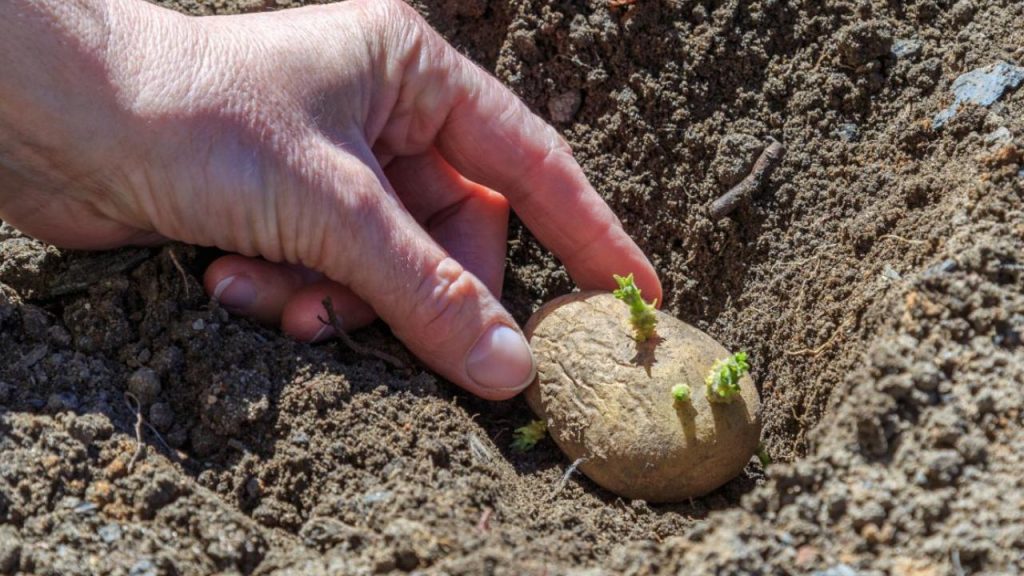
When to Plant Potatoes
Potatoes grow best with cool weather in spring and fall. They can tolerate light frosts but not hard freezes.
In warm regions, plant potatoes in late winter or early spring so they mature before summer heat arrives. In cooler areas, plant potatoes 2-3 weeks before your last expected spring frost when soil temperatures reach 45°F.
Potatoes take around 100 days to reach maturity, so count backward from your first fall frost date to determine when to plant.
Preparing a Garden Bed
Potatoes require loose, fertile soil to develop their edible tubers. Prepare a garden bed by:
- Loosening soil 12-18 inches deep with a shovel, rototiller, or garden fork
- Mixing in 2-4 inches of compost or well-rotted manure
- Evening out soil into raised rows or beds
- Soil pH should be 5.0-6.5
Potatoes grow best in slightly acidic soil. Test pH and add lime or sulfur to adjust as needed.
Planting Potatoes
Once sprouts have emerged on your seed potatoes and your planting bed is prepped, it’s time to plant.
Dig trenches 6-8 inches deep with rows spaced 2-3 feet apart. Space seed potatoes 12-18 inches apart within the rows.
Place seed potatoes in the furrow with the sprouts facing up. Cover each tuber with 4 inches of soil. As plants grow, continue mounding soil up around stems until trenches are filled.
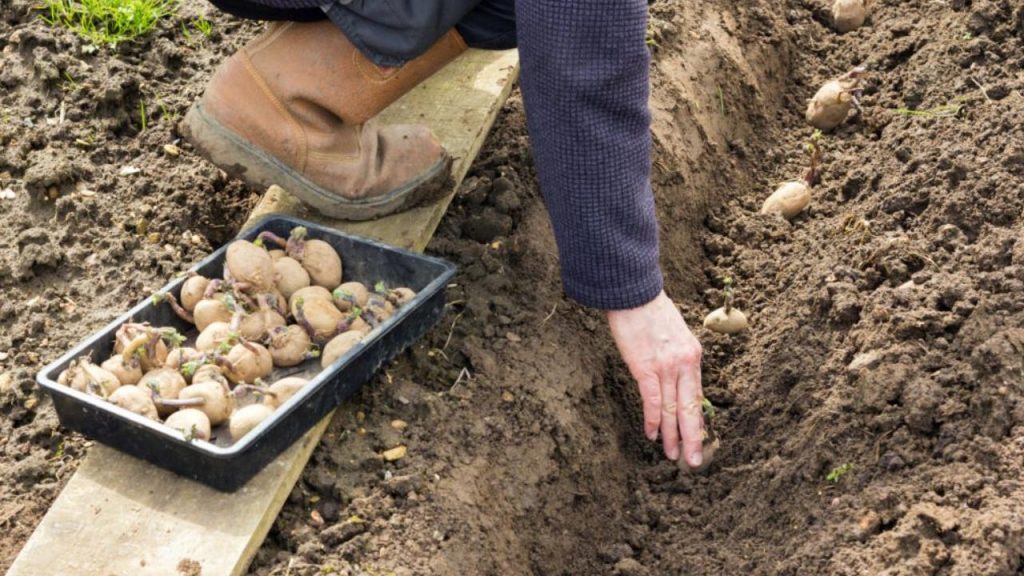
Watering and Maintaining Growth
Consistent moisture is key for robust potato growth. Maintain even soil moisture, especially as plants flower and tubers develop. A layer of mulch can help retain moisture.
Potatoes are heavy feeders. Every 2-3 weeks during the growing season, side dress plants with a balanced fertilizer or compost tea.
Once potato plants are established, mound soil around the base of stems for support. This also encourages development of tubers along the buried stem.
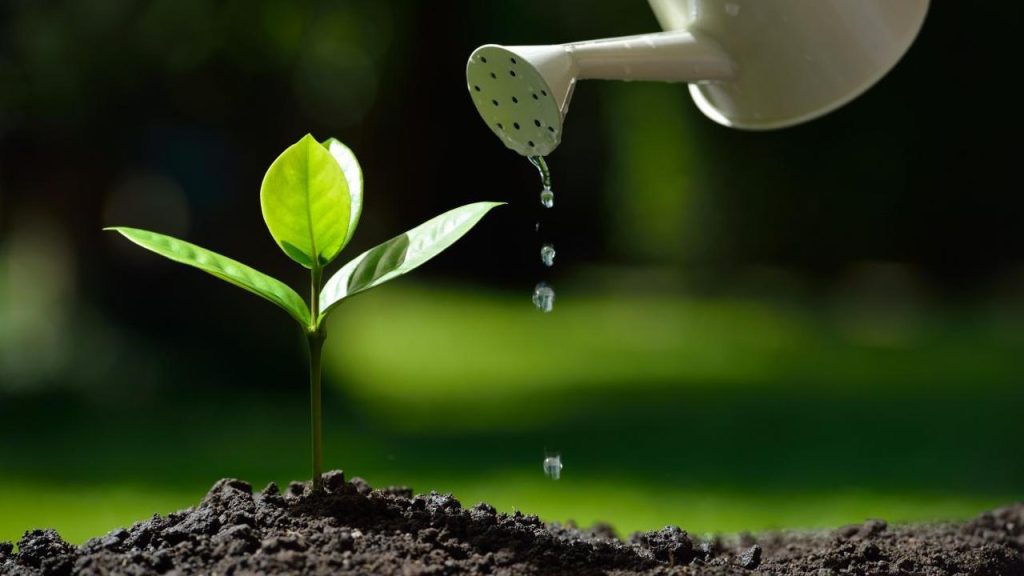
Controlling Pests and Disease
Unfortunately, several common garden pests can trouble potato plants:
- Colorado potato beetles – Pesticide-resistant beetles and larvae feed on leaves. Hand pick or use insecticidal soap.
- Flea beetles – Small jumping beetles chew many tiny holes in leaves. Floating row covers can protect plants.
- Aphids – Sucking insects spread viruses. Use a strong stream of water to dislodge.
- Late blight – Fungal disease turns leaves brown and spotted. Avoid overhead watering and consider preventive fungicide for susceptible varieties.
Rotate potato growing locations annually to reduce disease. Planting disease-resistant varieties can also help avoid problems.
Harvesting Potatoes
Potato harvest time depends on the variety grown, but typically occurs 3-4 weeks after the plants begin flowering. To check if potatoes are ready:
- Gently dig around a plant and feel for larger tubers
- Stems may fall over and die back when potatoes are mature
- Early potatoes can be carefully “stolen” while plants are still growing
Use a digging fork to carefully unearth potatoes. Take care not to nick or cut tubers, as this can shorten their storage life.
Allow potatoes to dry on the soil surface for 1-2 hours before gathering. Move any damaged or bruised potatoes to be used right away.
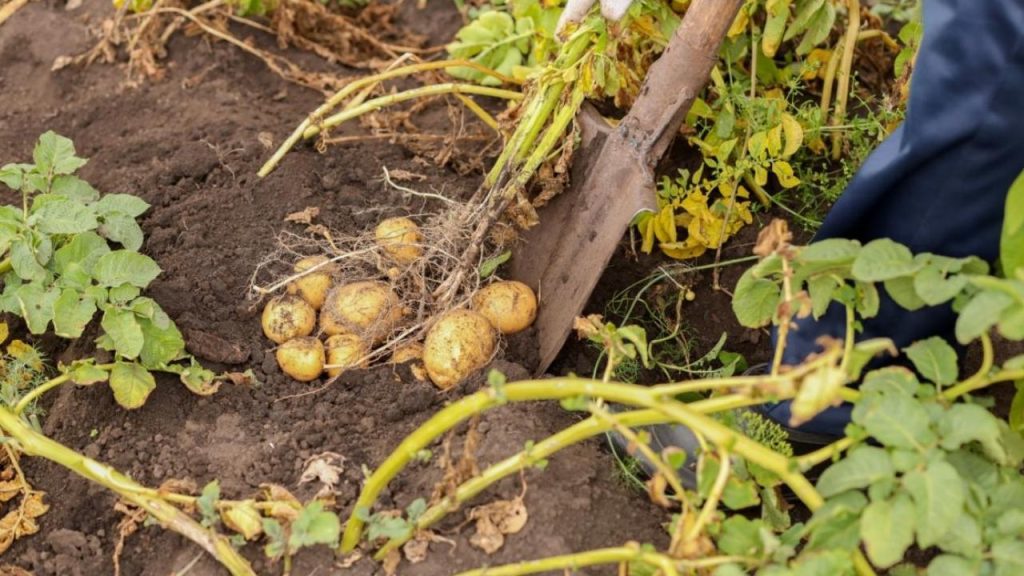
Storing the Harvest
Freshly harvested potatoes will keep 2-3 weeks at cool room temperature. For long-term storage:
- Cure potatoes 1-2 weeks in a dark, humid location at 50-60°F
- Brush off dirt but don’t wash skins
- Store cured potatoes in a cool (40°F), dark place
- Check periodically and remove any spoiled potatoes
With the right growing conditions, potato harvests can be stored 6-8 months or longer. Late maturing varieties tend to have the best keeping qualities. Avoid refrigerating potatoes, as cold damages potato starch.
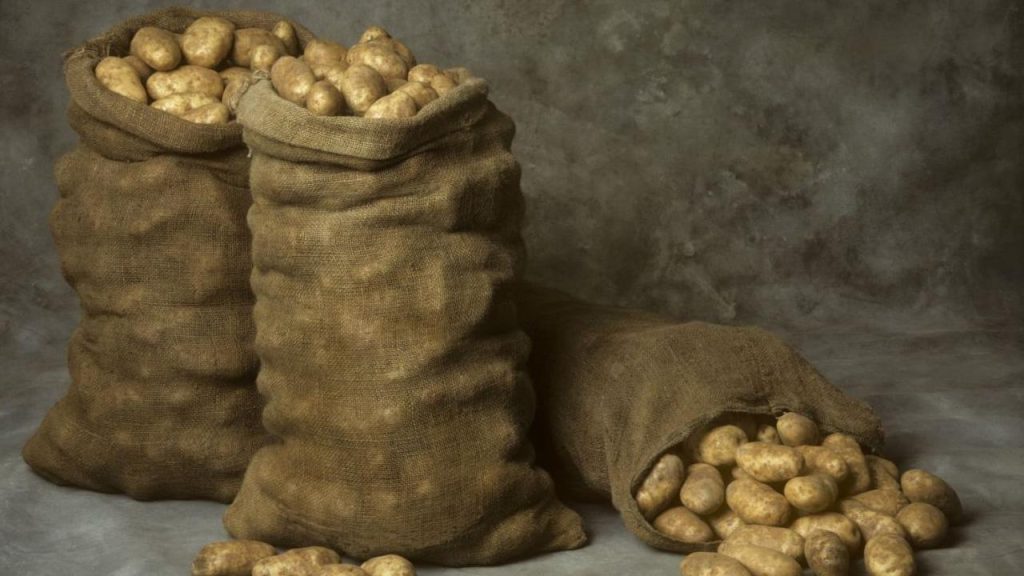
Troubleshooting Common Potato Problems
Growing potatoes comes with a few potential challenges. Here are some common issues and solutions:
Green potatoes – When tubers are exposed to light, they produce toxic compounds called solanine. Prevent by properly hilling soil over stems. Discard any green potatoes.
Soft rot – Bacterial disease causes potatoes to turn brown, ooze, and smell bad. Avoid overwatering and harvest potatoes gently.
Poor yield – Small or fewer potatoes may result from nutrient deficiencies, overcrowding, or harvesting too early. Ensure optimal soil fertility and spacing.
Pitting/cracking – Fluctuating soil moisture can cause tuber defects. Maintain consistent watering and use mulch.
Bruising/damaged skin – Rough handling during harvest and curing causes bruises and scrapes. Use care when digging and sorting potatoes.
Patience and attentive care will be rewarded with a bountiful potato harvest. With some practice, you’ll be harvesting heaping buckets of homegrown potatoes to enjoy all season long.

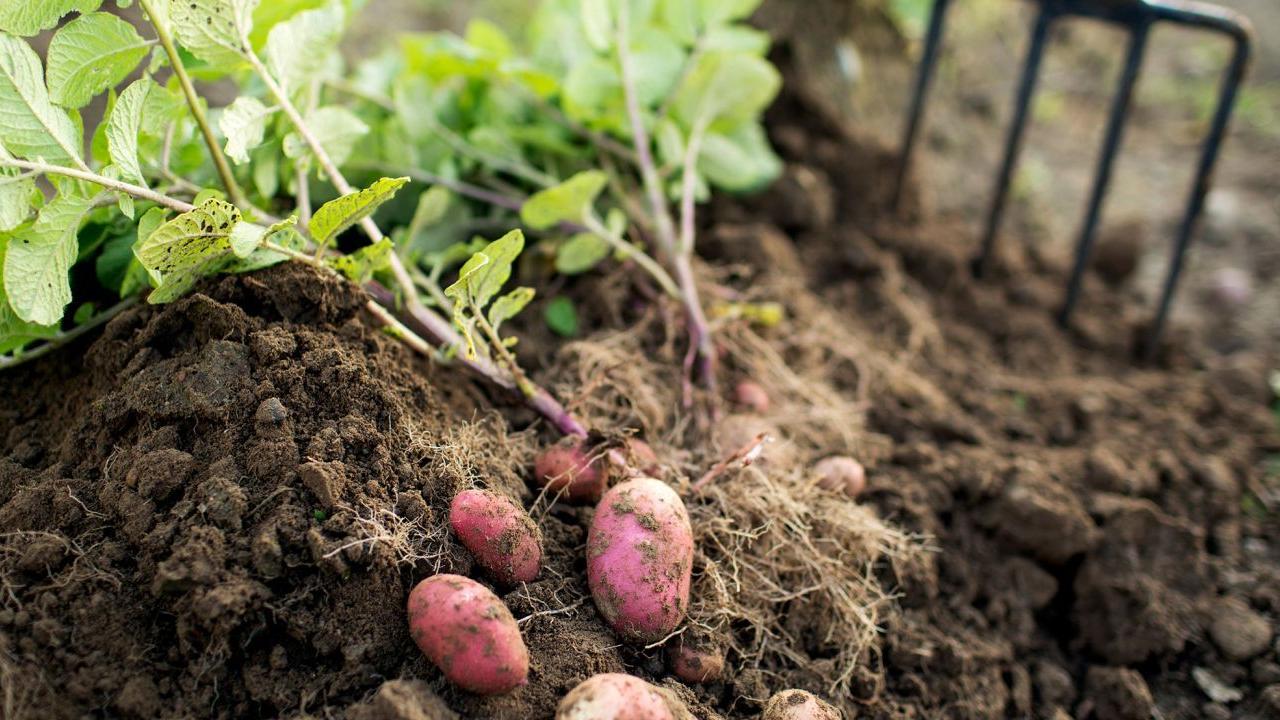


Leave a Comment